

We may earn revenue from the products available on this page and participate in affiliate programs. Learn More ›
Christmas lights dress up a holiday tree, making it twinkle and glow. It takes some practice to distribute these tree lights evenly without burnt-out bulbs, lights clumped in some spots (and missing in others), or tangled cords.
To avoid the headache that can come with decorating an indoor or outdoor tree, we consulted Sarah Ruffalo, professional Christmas tree decorator and owner of The Holly Jolly Box, for expert tips on the best way to hang Christmas lights on a tree.
Project Overview
Working Time: 30 minutes to 3 hours, depending on the size of the tree
Total Time: 1 to 4 hours
Skill Level: Beginner
Estimated Cost: $10 to $100, depending on the number of lights
Before You Begin
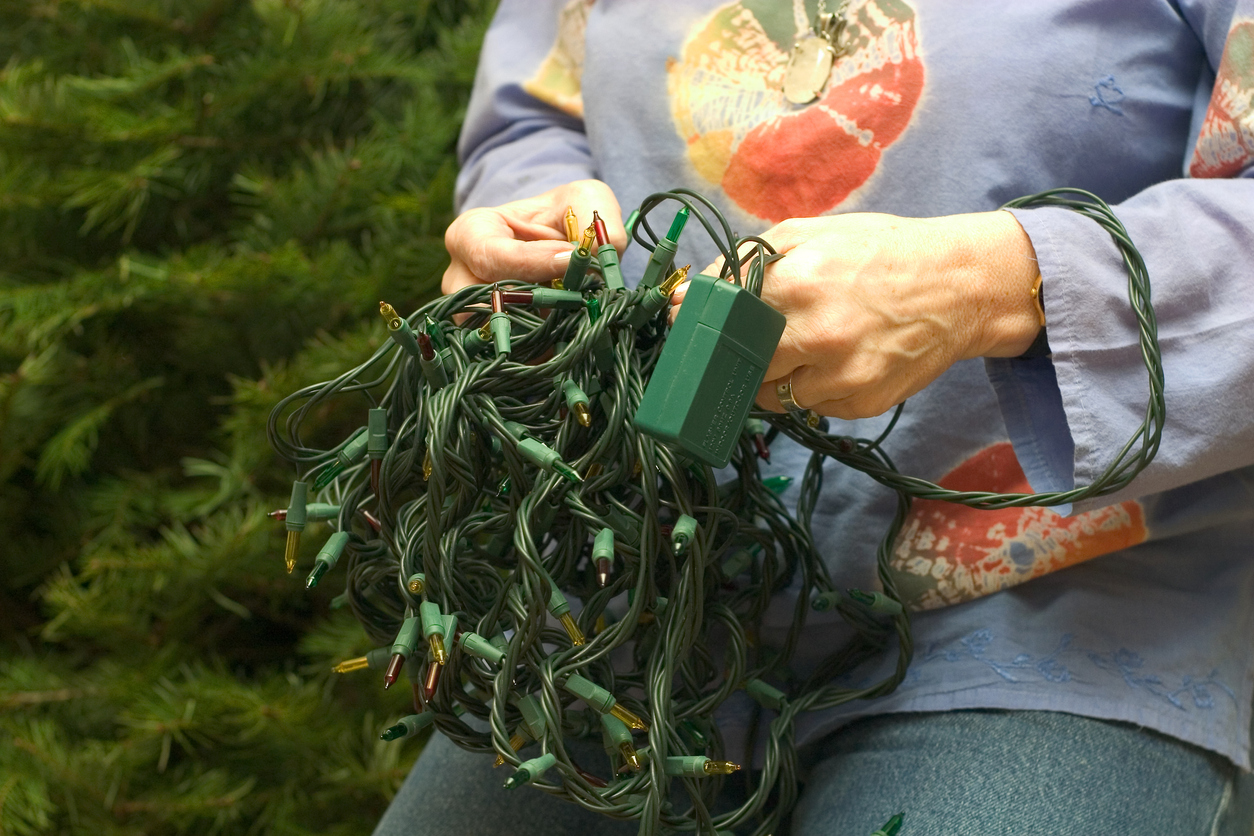
Before adorning your tree with lights, ensure that all strings are in good working condition and free of damaged sockets or frayed wires. You’ll also want to make sure you don’t overload electrical outlets—you don’t want overheating or potential fire hazards.
RELATED: The Best Storage Solutions for All Your Holiday Gear
Types of Christmas Lights
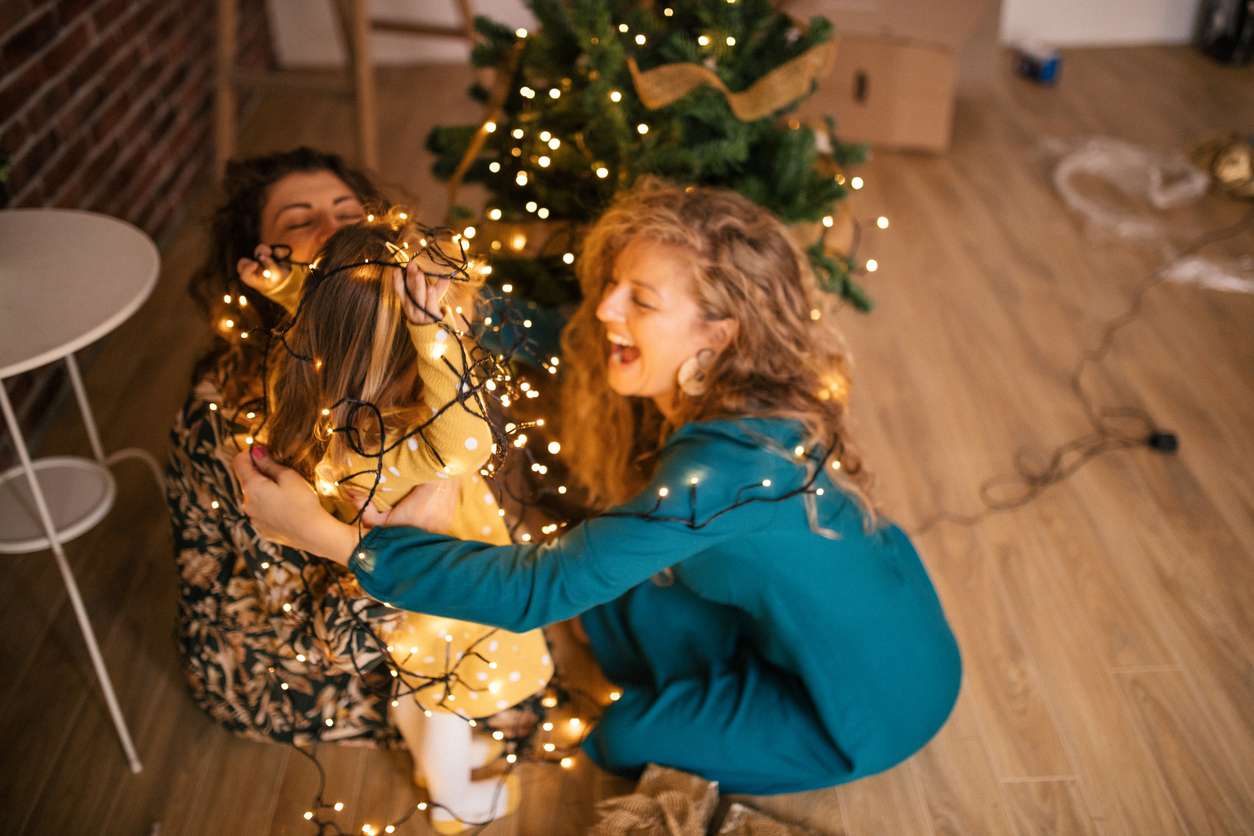
Everyone has a different aesthetic when decorating for the holidays. From elegant to whimsical to completely over the top, there are Christmas lights in sizes and colors to suit many preferences.
“The two types of string lights are incandescent and LED,” Ruffalo says. “Incandescent lights are the traditional, warm, and classic Christmas lights. They can be hot to touch but are less expensive [and] less energy-efficient than LEDs but offer a cozy, nostalgic glow. LED lights are energy-efficient, more costly, and longer lasting.” Ruffalo adds that LED lights emit less heat, are cool to the touch and “overall are a safer choice for indoor use, especially if you are using a real tree.”
Once you determine the type of string lights you’ll use, you’ll need to choose the size of the bulb you want for your tree. These are the three main types of bulbs for Christmas tree light designs.
Mini String Lights
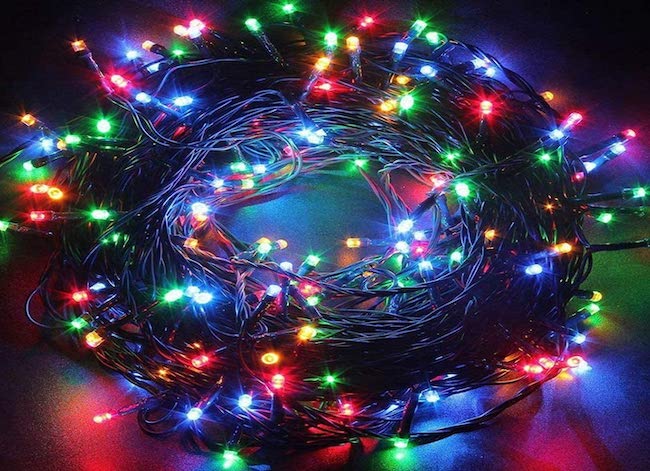
Mini string lights are the smallest size lights. Generally candle-shaped and only a fraction of an inch in length and diameter, they are elegant additions to a Christmas tree. “Mini lights give the best twinkle and glow, whether you use incandescent or LED, and are the traditional lights used in most trees,” Ruffalo says.
Retailers also might refer to these as twinkle lights, as mini string lights with a faceted surface are designed to have a sparkle effect.
Our Recommendation: TW SHINE 200 LED 66FT string lights at Amazon for $13.99
These mini string lights are crowd pleasers, with 200 colored Christmas lights spaced just under 4 inches apart. The string is 66 feet in total light length and has eight mode settings. They’re waterproof, and can be used as either indoor or outdoor Christmas lights.
Large Bulb Lights

Large Christmas lights can make a tree look like it’s taken right out of a holiday movie. These bulbs are at least 1.5 inches long and about an inch in diameter, but can be larger. Large bulb lights can bring a festive glow to an indoor tree, but are more often used on outdoor Christmas trees because larger lights can better withstand wet or cold weather. “If you are going for a vintage or retro look, using the large color bulbs in your Christmas tree or outdoors will help you achieve that look,” Ruffalo explains.
Our Recommendation: Wintergreen Lighting Multicolor Christmas Lights Set at Amazon for $22.99
Designed with energy-efficient, bright, and durable LED lights, the 17-foot string of lights has 25 dimmable bulbs available in multiple or single colors. A single plug can support up to 90 sets of these indoor or outdoor Christmas lights.
Novelty Christmas Lights
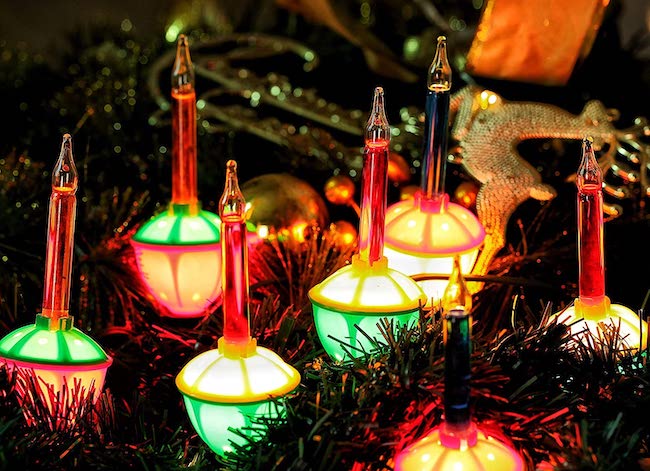
Do you want your tree to really stand out? Invite the spirit of the season into your home by stringing up novelty Christmas lights. These aren’t your standard tree lights—the bulbs are formed into unique shapes (chili peppers, anyone?) or unexpected colors, and may well be every bit as interesting, even gaudy, as the ornaments that hang next to them.
Our Recommendation: Hayata 7 Count Color Christmas Bubble Lights at Amazon for $18.99
Celebrate a good, old-fashioned Christmas with these colorful 1940s-inspired bubble lights that glitter once they’re warmed up. These lights have seven bulbs per 6.6-foot cord, and a plug that supports 12 strings.
RELATED: The 11 Best Indoor Christmas Lights
Prepare the Christmas Tree
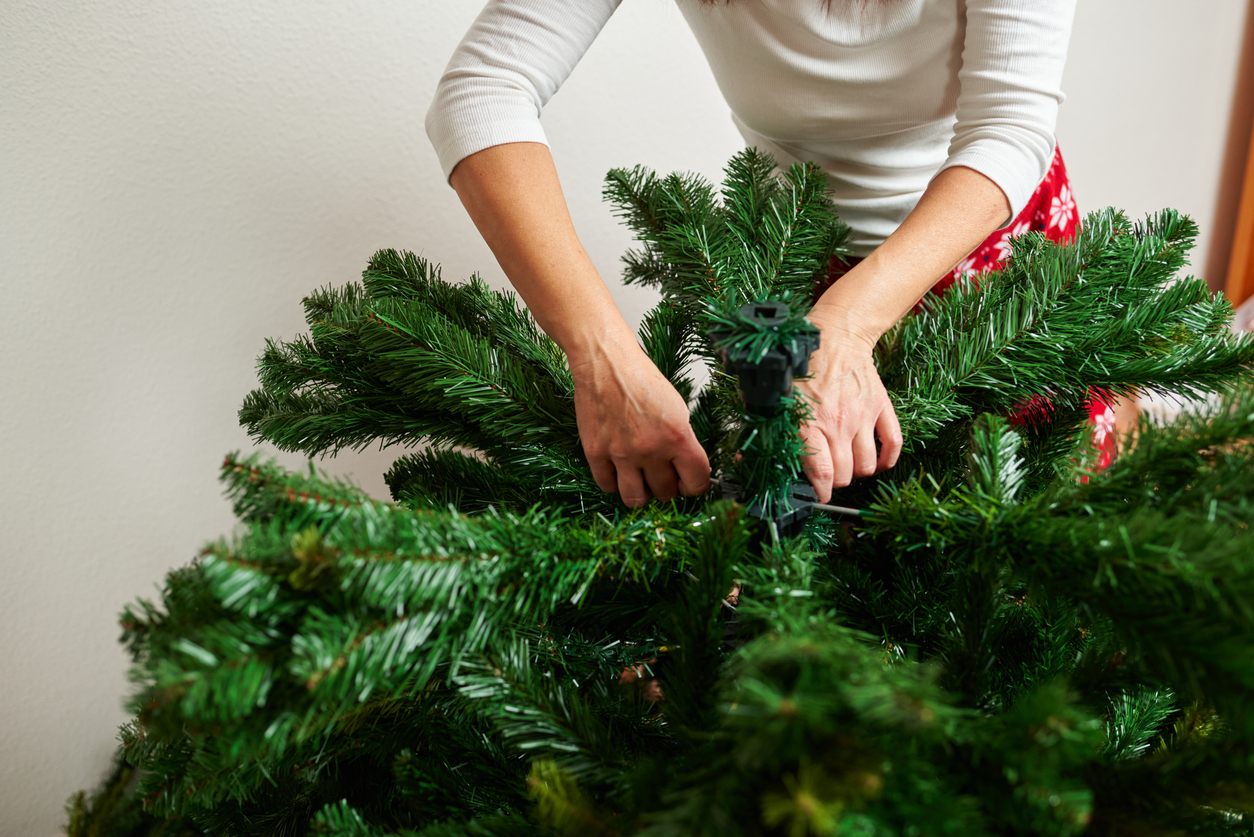
Before learning how to put Christmas lights on a tree, you have to have the tree set up first. Real evergreen trees require a day to settle naturally after being placed in their stand. Even the best artificial Christmas trees need to be fluffed before adorning them with Christmas tree lights.
As a general rule of thumb, every foot of tree height should be decorated with approximately 100 mini lights or 50 larger lights. For a general estimate, Ruffalo suggests following these guidelines:
- Small trees (4 to 6 feet): 200 to 300 lights
- Medium trees (6 to 7.5 feet): 300 to 500 lights
- Large trees (8 to 9 feet or taller): 500 to 900+ lights
“You can always use more [lights]l, depending on the level of light and twinkle effect you want on your tree, but this is the basic guideline I use for a standard tree,” she says. Ruffalo adds that it is better to buy more lights than you think you might need in case you come up short or have a defective set; this way, you won’t have to go out in search of a matching string during the Christmas rush.
RELATED: We’ve Tested Over 30 Christmas Trees, Our Favorites Look So Real You Can’t Tell They’re Artificial
How to Put Lights on a Christmas Tree Horizontally
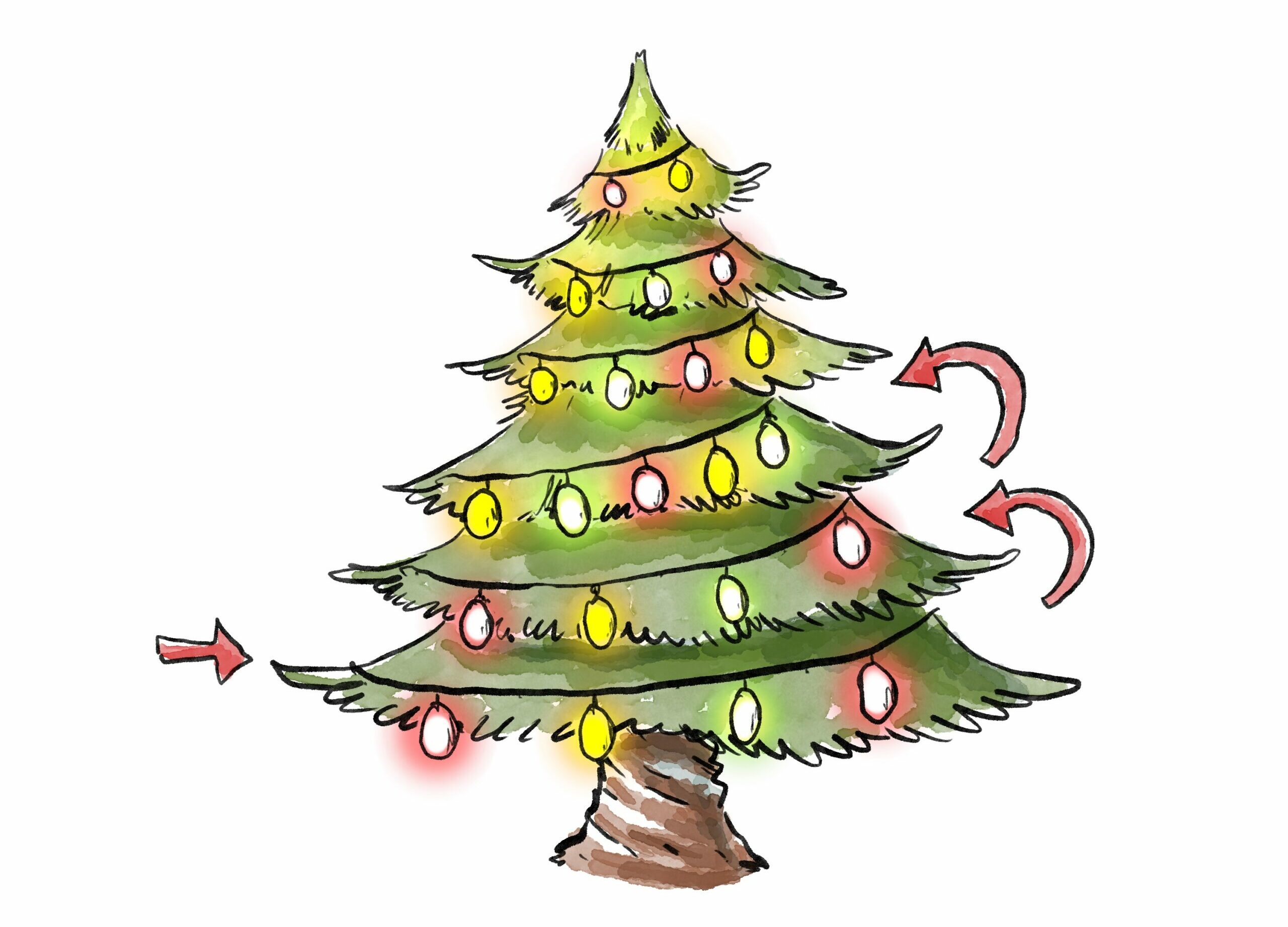
Once you have picked your lights, prepared the real or artificial tree, and determined how many lights you need, it’s time to light your tree.
Step 1: Untangle and test Christmas lights before placing them on the tree.
If you’re not in the habit of coiling and putting your Christmas tree lights away properly every year when storing decorations, step one of putting Christmas lights on a tree is untangling them and looping them into an easy-to-unroll coil for decorating.
Always make sure your Christmas lights work before putting them on the tree. Testing the lights and replacing any burnt out bulbs at the beginning of this process is a lot easier than doing it standing on a stepladder, swapping out bulbs on the top of an 8-foot tree. Leave the Christmas lights on while you’re hanging them to best gauge the spacing between the bulbs. Also, with the lights plugged in, you already know that the cord reaches the power outlet, eliminating the need to rewrap the tree or add an extension cord.
RELATED: How to Fix Christmas Lights: Troubleshooting, Repair, and Maintenance
Step 2: Start at the base of the tree and work your way up.
Starting from the bottom of the tree, weave the lights over and under lower branches in a gentle S shape. String them upward around the tree, like wrapping a maypole, continuing to weave around branches in that S shape. Don’t rush this part, and periodically step back and look at the tree. Lights always look better if they’re evenly spaced; it’s easier to make adjustments as you place the Christmas lights, rather than afterward.
Step 3: Continue adjusting the Christmas lights and adding additional strings of lights as you go.
When placing lights on a Christmas tree, hang some of the lights near the branch tips and push other lights toward the inside of the tree—this helps create light from within the tree, which draws the eye deeper. Continue repositioning the lights as you work your way up the tree. When it is time to add another string of lights, connect it once you’ve finished hanging the string of Christmas lights you’re working with now. If you connect all the strings together at the beginning, it becomes cumbersome to wrap them around the tree.
If you have any extra lights once you reach the top, start winding them back down the tree or adjust the lower lights to ensure the string of lights ends at the top. After you have put the Christmas lights on the tree, do any final adjustments before adding ornaments or other decorations.
How to Put Lights on a Christmas Tree Vertically
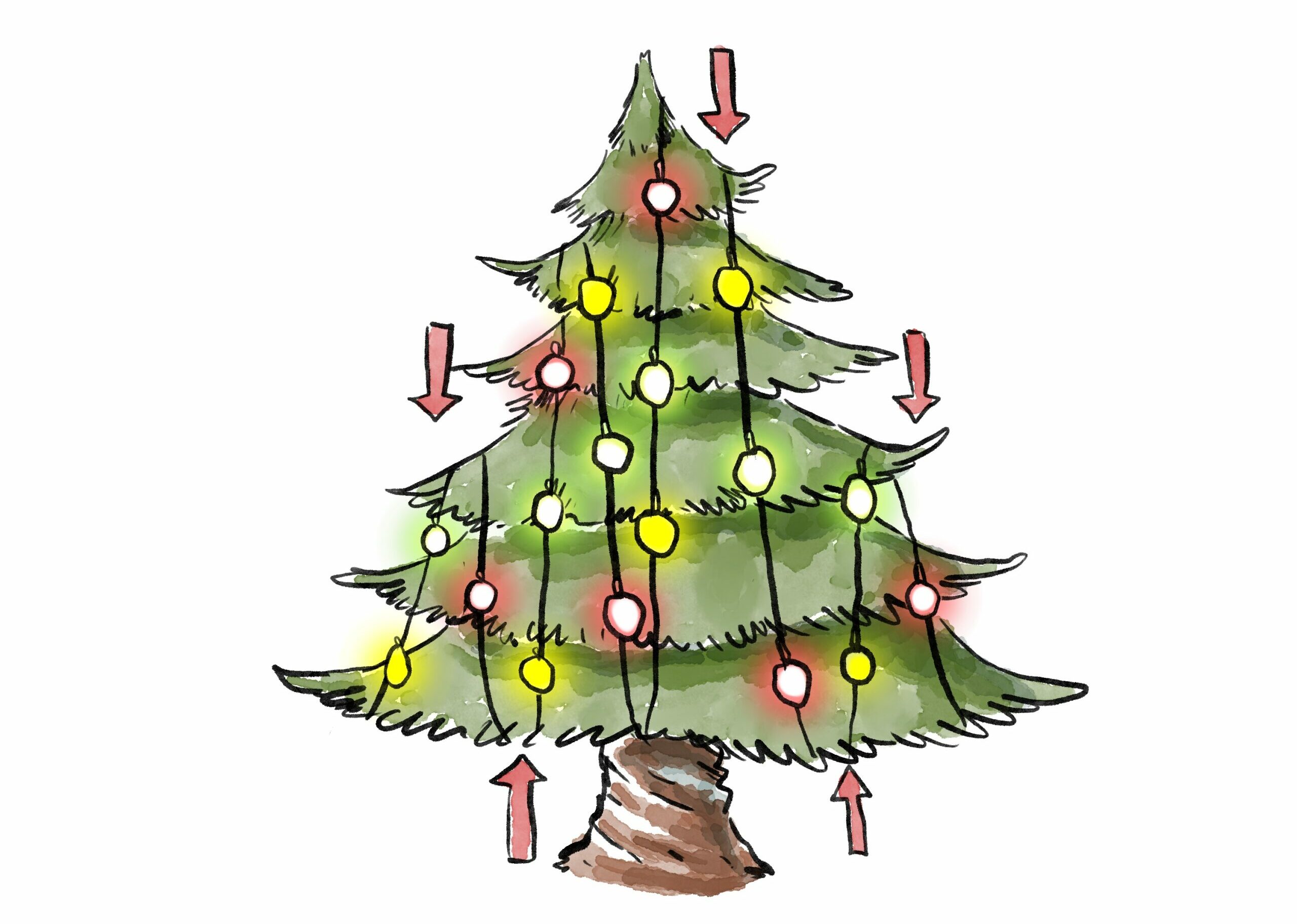
Many people put lights on their Christmas tree horizontally because that’s how they learned to do it. Placing Christmas lights on a tree vertically is faster, and it makes taking them off easier. Vertical wrapping also prevents overuse of lights, as fewer bulbs are needed to create a result similar to horizontally strung lights.
Step 1: Check your Christmas lights and decorate one-third of the tree at a time.
When putting Christmas lights on a tree vertically, the first step is very much the same as it is for hanging lights horizontally. Plug in the Christmas lights, change out any burnt-out or broken bulbs, and prepare the strings of lights in coils that unravel easily.
Keep the lights plugged in as you position them on the tree, as it makes them easier to see and adjust as you go. Mentally divide the tree into three sections (or more, if it’s a larger tree), as you’ll add lights to one section at a time.
Step 2: String the Christmas lights in an upside-down V shape.
Starting from the bottom branches, string the lights in an upside-down V shape (or triangle) to section off the first area you want to fill with lights. Then it’s a simple matter of zigzagging the lights (vertically or horizontally) from one end of the section to the other. For a shortcut, you can make the Vs narrower, and not zigzag more lights between them. For more dimension, push some lights into deeper branches. Once the section is filled in with Christmas lights, it’s easy to make adjustments to space them out evenly. Avoid tangles by adding more strings of lights as you go.
Step 3: Add lights to the remaining sections and make any final adjustments.
Repeat Step 2 and add lights to the remaining sections of the Christmas tree. Start with the upside down V, fill the branches with lights, and adjust the spacing. When starting on a new section, make sure the upside down V blends in seamlessly with the previous section, ensuring there aren’t any areas lacking in Christmas lights.
This technique leaves more wires at the top of the tree, which can be hidden with a nice tree topper. Ornaments and decorations will also hide a lot of the wire, so don’t get too caught up in trying to hide it.
RELATED: The Best Christmas Garlands
Final Thoughts
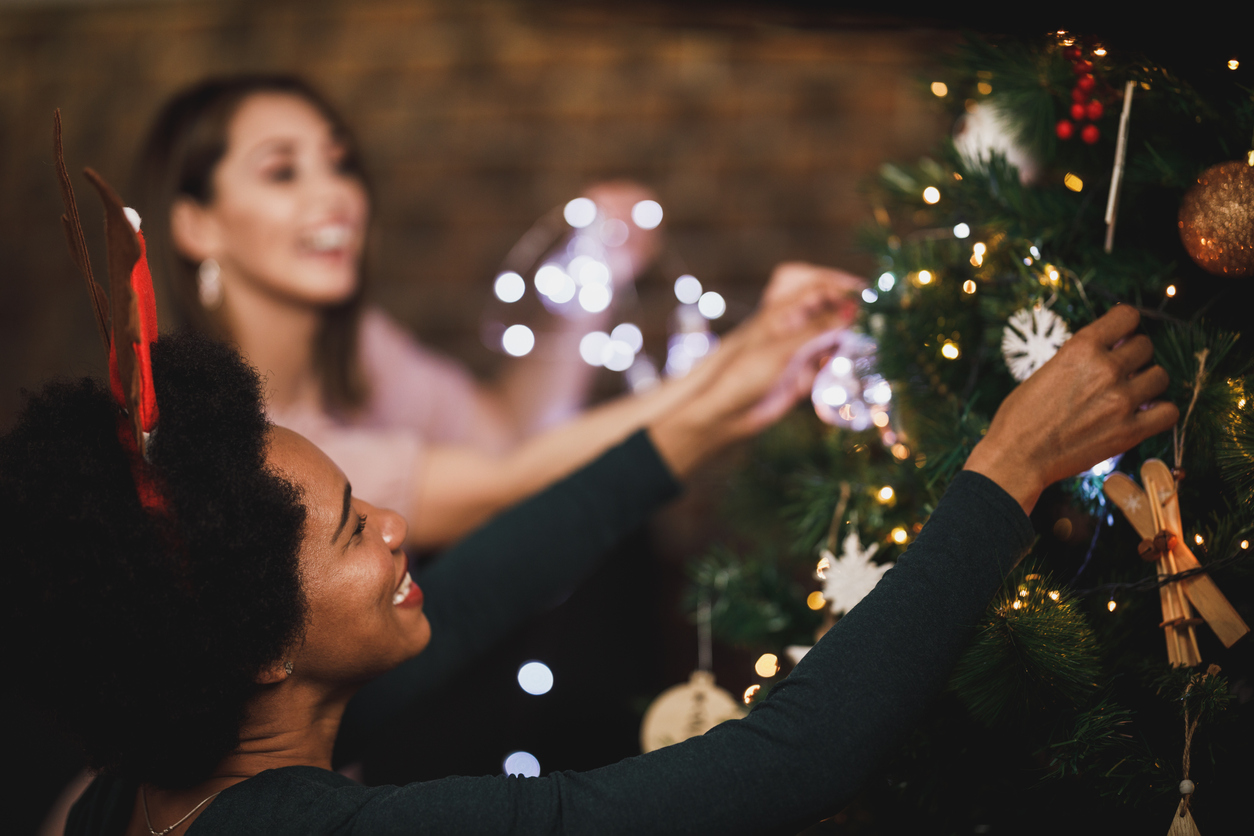
If hiding the electrical cords is important to you, choose string lights with a green cord that will blend into the tree branches. While 100 mini lights or 50 larger lights per foot of tree is the unofficial standard, Ruffalo recommends more, so add as many lights as you like, providing the plug supports them (this will be outlined on the manufacturer’s instructions).
Finally, “setting your Christmas tree lights on timers to automatically turn them on and off during specific hours also reduces energy consumption,” says Ruffalo. She says you can purchase Christmas tree light timers at any home improvement store or online.
All prices listed here are accurate as of November 25, 2023.
